
|
|
| www.wildfirenews.com | ARCHIVED ON 05-21-2003 |
|
HOUSE PASSES THINNING BILLMAY 21 -- WASHINGTON, DC: The U.S. House voted yesterday to accelerate thinning of 20 million acres of overstocked woodlands prone to wildfires. Co-sponsored by Rep. Greg Walden and Rep. Scott McInnis, the bill has President Bush's support and was approved 256-170. The Bend Bulletin reported that timber industry representatives are pleased with the bill's passage; they say the legislation opens the door for effective, efficient thinning projects for the nation's forests. But some Democrats and environmental groups said the legislation would promote more logging of fire-resistant trees under the pretext of reducing fire risk. Walden downplayed criticism of the bill after the vote, saying that the legislation will expedite timber-thinning projects on fire-prone federal lands. The legislation allows federal agencies to accelerate fuels reduction projects on forests with the most severe fire risks, either because they are overgrown or because they have been infested with insects or disease. It requires that agencies develop only one alternative during the environmental analysis stage of project planning. Currently agencies have to complete several in-depth alternatives to comply with the National Environmental Policy Act (NEPA). The legislation also exempts specific areas from normal environmental studies and limits how the public could appeal projects, and directs judges to expedite any appeals. Walden said opponents may filibuster the bill in the Senate, but he warned that such a move could have grave consequences. "I think as they delay and fiddle and fumble around, they run the risk of having catastrophic fires burn," he said. "Two of the three legs of the stool are held together now. We have the White House on board, the House and bipartisan position, and now it is up to the Senate." The House defeated a proposal by Rep. George Miller of California that would have focused fuels projects on the wildland/urban interface and provided $500 million in aid to local communities over five years. Within approximately two weeks, the following final or proposed rules will be published in the Federal Register: 1) Publication in the Federal Register of the final rule for the Categorical Exclusion for Hazardous Fuels Treatment Projects and Rehabilitation and Restoration of Burned Areas For more information on the new rules and their publication, contact Jennifer Plyler at (202)205-1777 at Forest Service headquarters or check out the National Fire Plan website at www.fireplan.gov
PERIL LOOMS ABOVE LOS ANGELESMAY 20 -- LOS ANGELES, CA: Kevin Turner, assistant chief of the CDF Riverside Unit, first noticed in July 2001 that big ponderosa pines in the San Jacinto Mountains were showing signs of bark beetle attack. With browning needles and discolored pitch oozing out of insect borings, the trees were as good as dead.
A report in the Sacramento Bee notes that by the spring of 2002, after three years of severe drought, entire timbered hillsides were changing color, from the familiar pointy green treetops to deathly viewscapes of red-brown. Bark beetles were exploding in numbers and killing the trees. At least 150,000 acres of southern California's mixed-conifer forests are affected. With millions of dead trees and dry brush, the potential for a catastrophic wildfire is obvious. "I've never seen tree and brush vegetation die-off like is occurring down there," said Regional Forester Jack Blackwell. "It's a very, very critical situation." Bark beetles are only a symptom of the real problem. What's actually killing southern California's forests is chronic overstocking -- too many trees. The forests are unnaturally dense after a century of aggressive fire suppression. Further complicating the situation in recent decades has been opposition to forest management, both within the urbanized forest and across the outlying public lands. "Nobody wanted to thin trees on their property, or anywhere else for that matter," says David Caine, who coordinates volunteer community fuel treatment efforts on behalf of the San Bernardino Mountains Fire Council. "But things have really changed a lot over the past year. People can no longer deny what's going on." Richard Minnich, a UC Riverside geography professor who has studied California forest ecology for decades, says the forest conditions in the mountains constitute an "ecological 9/11." Minnich says the unmanaged forest systems of the San Pedro Martir Mountains in Baja California, which have never been logged or experienced significant fire suppression, undergo a moderately hot burn about every 50 years. The fire kills most of the understory trees and brush that are competing for site moisture and growing space. Left more or less intact are the large dominant trees that are scattered and open, to a density of only 40 per acre. By contrast, in the San Bernardinos, the dying forests contain as many as 300 trees per acre, each struggling for its own share of limited site moisture, nutrients and sunlight.
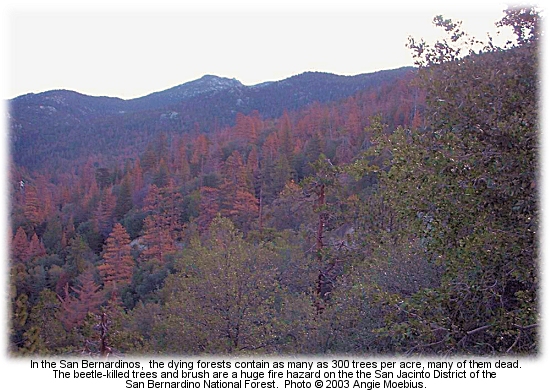 Fire managers are scrambling to prepare for the upcoming fire season. The danger facing southern California's mountain communities is difficult to overstate; agencies such as CDF and the Forest Service are racing to clear dead vegetation adjacent to roads for "public evacuation corridors." Ironically, a big problem is just disposing of all the dead wood that's cleared. With no remaining sawmills in the region, some logs are shipped six hours to the nearest mill in the Sierra Nevada; others are just buried in landfills. "I think we're in a triage mode," says Gene Zimmerman, Supervisor of the San Bernardino National Forest. "I'll be really surprised if we get through this summer and don't burn homes and don't burn people." He says he may need to bar public access to areas of the national forest for months this summer season.
GAO REPORT EXAMINES PROJECT DELAYSMAY 16 -- WASHINGTON, DC: Republican lawmakers and environmental groups are both citing a new government report in debates over a wildfire prevention bill that would limit environmental assessments and appeals of projects. Some lawmakers say the report issued last week by the General Accounting Office shows that environmentalists are the obstructionists that conservative Republicans have always suspected they were. Environmentalists and their congressional allies, though, are saying the GAO study shows that challenges to projects have not kept the U.S. Forest Service from doing wildfire prevention work in a timely fashion. The report, according to the Statesman-Journal, says government researchers reviewed 762 fuels reduction projects and found that 75 percent of the projects proceeded without significant delays because of environmental challenges. That's where environmentalists find ground for saying there's no basis for efforts by the Bush administration to limit environmental assessments and challenges. "The GAO report shows that the process worked," said Marty Hayden, legislative director for Earthjustice, the nation's largest nonprofit environmental law firm. "The overwhelming majority of projects get the green light to proceed in 90 days or less." And Michael Francis with the Wilderness Society said a wildfire prevention bill by Reps. Scott McInnis and Greg Walden that would streamline appeals "is attempting to fix a problem that doesn't exist." But in the same report, researchers note that 457 of the 762 projects were exempt from appeals. Of the remaining 305 projects, well over half -- 180 -- had appeals lodged against them -- and 23 of them ended up in court. Rep. Richard Pombo, chairman of the House Resources Committee, said the report strengthens his argument that environmental groups have engaged in "frivolous" challenges to fire reduction plans. "I hope this study serves as a wake-up call to the American people that radical environmental rhetoric serves a political purpose, not an environmental cause," he said. The bill, called the "Healthy Forests Restoration Act," should be on the House floor next week. The House Judiciary Committee voted the bill out of committee Wednesday without making changes to judicial-review sections that critics say would limit federal judges' actions in court challenges to fire prevention plans.
BUT DID THE FIREFIGHTERS INHALE?MAY 14 -- SIERRA VISTA, AZ: Firefighters expect to contain a wildfire burning across southern Arizona grasslands by this evening, according to a report by KVOA-TV. The fire is west of Fort Huachuca and about 50 miles southeast of Tucson. Crews have contained about 85 percent of the 450-acre A-Bar Fire, which was started on Sunday by illegal immigrants who built a cooking fire that blew out of control. Three firefighters had to deploy shelters Monday when winds shifted and flames began moving back toward them. A safety bulletin issued Sunday by the NWCG said three members of a Type 6 engine crew from the Nogales Ranger District deployed shelters; there were no injuries and the engine received only minor damage. The fire spotted across a two-track road and cut the crewmembers off from their engine; the crew foreman and two crewmembers burned out a 40- by 80-foot safe zone in grass and oak before deploying. The fire burned around the safe zone. After the fire had cooled down, the other two crewmembers drove to the safe zone and retrieved those who had deployed. A Type 2 incident management team was ordered and is currently on the fire. The Tucson Citizen reported that four airtankers and two helicopters were working the fire on Monday. According to the Arizona Daily Sun, winds kicked up yesterday afternoon, and were predicted again for today. The airtankers and helicopters might be released today, according to Rich Kvale's team; strong winds yesterday shut the air show down for two hours in the morning. A weather system moving in from the Pacific will cause gusty winds this afternoon, and crews are hoping to contain the fire before the system arrives. The fire torched a camp that was being used by drug smugglers; about 400 pounds of marijuana went up in smoke with the camp. Another fire at the base of the Santa Catalina Mountains north of Tucson burned more than 100 acres; it was first reported yesterday afternoon burning in grass and brush on state and private land. Fred Mascher, airspace coordinator for the Arizona Land Department, said about 35 firefighters were on the fire and more are expected today. "Anything like this could always turn on you," he said, "but the guys on the ground seem to have a good handle on it."
FIRE PILOTS BUSY IN MINNESOTAMAY 07 -- ST. PAUL, MN: Aircraft were busy on more than a dozen fires in northeastern Minnesota over the weekend; KAAL-TV reported that grass and brush fires broke out near Tower, Cotton, Babbit, and other cities. Three CL-215 water scoopers, a P-3 Orion, a heavy helitanker, and a SEAT dropped more than 41,000 gallons of water and retardant on seven fires Saturday. The Minnesota Fire Center says fire conditions in northeastern Minnesota are "very high to extreme." A fire near Hibbing last week kept a lot of firefighters busy, according to the Daily Tribune; resources included engines from the Hibbing DNR office, a muskeg ATV from Hibbing, a fire tracks vehicle from Eveleth, a J5 track, Silica Fire Department, water tenders from the Hibbing Fire Department, a helicopter from the Hibbing tanker base, and two CL-215's scooping from Swan Lake. The Grand Forks Herald reported that fires over the weekend ranged from the Wahlsten Fire south of Tower to the Comstock Lake fire near Cotton and two others near Babbitt. Aircraft dropped nearly 42,000 gallons of water and retardant on just seven fires on Saturday.
NO MORE RETARDANT? ENVIROS PLAN TO SUEMAY 07 -- GRANTS PASS, OR: A summer without retardant is like ... uh-oh. But that's what firefighters may be facing if a lawsuit from environmental groups lands on the desk of the Forest Service in another month.
No word on whether they're suing the other agencies with retardant contracts. According to an AP report in the Statesman-Journal, FSEEE's Andy Stahl says the Forest Service has failed to consult with the U.S. Fish & Wildlife Service or NOAA Fisheries under the Endangered Species Act to update guidelines for dropping retardant near waterways in light of new studies showing how deadly retardant can be. He says the agency has failed to acquire permits under the Clean Water Act to cover accidental drops in streams, or for discharging harmful sediments into streams while bulldozing firelines. Retardant spills have been deadly. Last August, an airtanker accidentally dumped hundreds of gallons of retardant into the Fall River south of Bend, Oregon, while working a small but very threatening fire there. The spill killed nearly all the fish along a 6-mile stretch of the stream. The Oregon Department of Fish & Wildlife said the retardant killed over 20,000 hatchery rainbows, native redbands, whitefish, browns, and brookies. Long-term retardants, mixed for delivery on a fire, contain about 85 percent water, 10 percent fertilizer, and 5 percent minor ingredients: color (iron oxide -- rust, or fugitive color -- fades with exposure to sunlight), thickener (natural gum and clay), corrosion inhibitors, stabilizers, and bactericides. The Fire Chemicals program of the Forest Service's Fire & Aviation Management evaluates and qualifies wildland fire chemicals. They maintain a list of qualified products that meet the Forest Service requirements. Fire pilots are not allowed to drop over water sources, and an accidental drop is rare. But according to Stahl, an environmental assessment the Forest Service did two years ago on the use of fire retardant was never released to the public. The warning letter from FSEEE to the Forest Service cites spills last summer into the Clackamas River during the Bowl Fire on the Mount Hood National Forest, and into tributaries of the Illinois River during the Biscuit Fire on the Siskiyou National Forest. In California, CDF purchases its retardant from the Forest Service. When the Forest Service announced in the spring of 2000 that a news study had shown a particular type of retardant posed a threat to aquatic wildlife under certain conditions, CDF dropped it, too. The retardant, produced by Fire-Trol, includes a corrosion inhibitor to protect metals in storage tanks, pumps, and aircraft tanks, and when it's combined with the colorant in the retardant and exposed to sunlight and water, it can create ferrous cyanide as a by-product, and the levels produced could be in violation of EPA standards.
The Forest Service last summer temporarily halted the use of some retardants, citing concerns about laboratory tests that showed a danger to fish and wildlife. FIRE-TROL Holdings L.L.C., based in Phoenix, protested the ban, and federal fire managers lifted the ban within a month. Fire-Trol contends there is no evidence of fish and wildlife danger outside the laboratory and maintains that retardants are formulated to minimize any negative impact. They have been in use for more than 25 years in many different areas, they say, and there is no record of any long-term adverse effects. Fire-Trol sold about 20 million gallons across the country in 2001, and by early last season they were far ahead of that. Robert Crouch, Fire-Trol's research and development manager, said there was one tanker base in Arizona that had used 2 million gallons already by June of 2002. "That's about 10 times their annual average," he said. "We anticipate an unusually severe fire season." Fire-Trol has contracts with the Forest Service, the BLM, and the state of California to produce retardant. Fire-Trol and St. Louis-based Astaris LLC are the Forest Service's main retardant suppliers; each company has a one-year contract with two renewal options to supply tanker bases around the country with retardant as needed. The retardant sells for about $800 a ton. So the enviros threaten to sue the Forest Service for using retardant, and the retardant makers have threatened to sue the Forest Service for halting use of retardant under contract .... maybe Fire-Trol and FSEEE could sue each other and sort it out? Or maybe we'll see a whole lot more water dropped on fires this summer.
CONGRESS NIXES FIRE FUNDINGMAY 06 -- RENO, NV: Congress is not likely to fund the Forest Service with a budget to more efficiently fight wildfires, says Mark Rey, U.S. agriculture undersecretary, but the agency should be able to hold its own until more money is available. "We are probably not going to find an alternative to the way we fund firefighting in this budget cycle," he said. "It will probably be something we have to tackle in 2005. But I think there is sort of a broad awareness that the current spend, borrow and repay system isn't working ideally any longer." An AP report in the Las Vegas Sun noted that fire agencies spent $1.6 billion on fire suppression -- four times the budgeted amount. Much of the spending was borrowed from accounts meant for other objectives, such as restoration, research, and reduction of hazardous fuels. Sen. Ron Wyden of Oregon was among those pushing to increase spending on the National Fire Plan to $3.1 billion in the coming year. But last month, House-Senate budget negotiators trimmed that to $2.6 billion. Rey said one of the problems this year is that a number of new chairmen filled slots on budget and appropriation committees in Congress. "And this is something that is probably going to require people to go through a cycle and then sit down and say, 'there's got to be a better way to do this,'" he said.
FIRE SEASON IN ALASKAMAY 06 -- ANCHORAGE, ALASKA: Firefighters brought a weekend wildfire near Kashwitna under control with the help of airtankers dropping retardant, according to the Peninsula Clarion; a private pilot spotted the fire Saturday just south of the Kashwitna River.
Firefighters also responded Sunday to a brush-pile fire near Sutton that got away from a homeowner. The Juneau Daily News reported a wildfire on the west side of Douglas Island, across the channel from Juneau. It was discovered Sunday, according to Dave Carr, fire management officer for the Juneau Ranger District, and was apparently started by a campfire. Two wildfires earlier this season were both started by campfires that were not properly put out or were left unattended. Dry, windy conditions have triggered a ban on all open burning in most of southcentral and Iinterior Alaska. Affected areas include the Mat-Su area, the Kenai Peninsula, the Copper River basin, and the Fairbanks area. The Division of Forestry suspended all burning one day after the official start of the Interior fire season. Robert Schmoll, FMO for the Division of Forestry in Fairbanks, said with the snow melted and the ground drying out, the risk of wildfires increases daily until greenup. On Friday, winds were forecasted at 15 to 25 mph with RH less than 15 percent; a red flag warning was issued for the Copper River Basin. The Alaska Fire Service, meanwhile, planned prescribed burns at Chena Lakes Flood Control Project in North Pole and on Fort Greely near Delta Junction. The continuous dry spell this spring is unusual, said Wyn Menefeewith with the Alaska Department of Natural Resources. Every spring, winds blow down the Matanuska and Susitna valleys, drying brush and trees out, he said. "That's happened almost every year. Then we end up in red flag." So far this season, firefighters have responded to 88 fires on state-managed lands, a relatively high number for this time of year.
WILDFIRE AWARENESS WEEKMAY 05 -- SACRAMENTO, CA: Today marks the opening of Wildfire Awareness Week, May 5-11, and the California Fire Safe Council wants California residents to give their homes and communities a fighting chance against wildfire this season. Wildfire Awareness Week is an annual campaign designed to educate residents in California's wildlands about reducing the risk of wildfire damage to their homes, property, and neighborhoods. The Fire Safe Council's role in CDF's statewide campaign is made possible with $1.1 million in grants to the Council from the U.S. Fish & Wildlife Service, the BLM, and Pacific Gas & Electric.
These funds also will pay for other projects this year: National Fire Safe Council Conference, May 13-14, including a field tour of fire safety projects in the Lake Tahoe area, a poster session featuring best practices for community-based National Fire Plan programs, and a 10-year anniversary reception. FireWise Community Workshop, May 14-15, to acknowledge the need for a collaborative community planning process, the California Fire Safe Council, the Tahoe Basin Management Unit, and the Nevada Fire Safe Council will host state-of-the-art mapping and wildfire simulations. "Fire Safe Inside & Out II" is an educational half-hour television program for California homeowners, designed to help save lives and property by motivating homeowners to make their homes fire safe. The Council is partnering with CDF and PG&E on this revision of the award-winning "Fire Safe Inside & Out." Public Education Toolkit, at firesafecouncil.org, includes a Media Handbook and the Community Outreach Manual. Fire Safe Successes Educational Calendar will picture the successes of local Council grantees achieved in the National Fire Plan's community assistance grants program. Each month will feature a project with before/after photos and an overview of the program's success. Learning to Live with Fire workshops will be based on a pre-fire management curriculum that can be customized for a wide range of industries including insurance, builders, landscapers, Resource Conservation Districts, government planners, and emergency planners. The Fire Safe Council is a coalition of public and private sector organizations that work to reduce losses from wildfire. Since 1993 the statewide Fire Safe Council has seen more than 100 local councils established to complete fire safety projects in their communities.
PRESCRIPTION FOR ARIZONA: FIREMAY 03 -- FAIRBANK, AZ: For the first time in several years, fire managers in Arizona are able to use prescribed burns, one of the best defenses against destructive wildfires. Across the state, fire managers have the weather combination they need for successful burns -- early rains followed by dry weather. By the end of May, according to a report by the Arizona Republic, more than 100,000 acres across the state will have burned. Firefighters on the Fort Apache Reservation already have burned 30,000 acres. Ongoing drought has severely limited the use of prescribed fire the past couple of years. Larry Humphrey, a fuels specialist with the BLM in southern Arizona, said he had to wait two years to burn an area of the San Pedro River bottoms east of Sierra Vista. "We tried this last year, and the weather screwed us up," said Humphrey. "We started fighting fires the second week of February down here last year, and when you do that, it's 'Katie-bar-the-door time.'" "When we had the time last year, we didn't have the weather," said Bruce Greco, fire management officer for the Coconino and Kaibab national forests in northern Arizona. "And when we had the window to burn, we didn't have the people, since they were off fighting fires." In southern Arizona, the BLM is planning another 12,000 acres of burns. But even if they only manage the 500 acres lit Thursday and Friday, it still puts them well ahead of last year. Dave Hall, the BLM's fire management officer for southern Arizona, said the only prescribed burning they did last year was when the Ryan Fire moved through one of their units they'd planned to burn. Despite weather delays this spring that kept fuels too wet to burn, the Coconino and Kaibab are more than half done with their burning. The Apache-Sitgreaves also got a late start, but Tom Beddow, forest FMO, says they caught up in March. John Philbin, state forester for the BIA, says his agency is a little ahead of last year; more than 40,000 acres of BIA land has been burned so far this year. In the higher elevations, fire managers face the challenge of burns in areas where bark beetles have killed the trees. The standing dead trees are considered vertical fuel. "There's been some concern about what's going to happen if we put some heat on those trees," said Greco. "But to me, the alternative is unacceptable."
BRADY AND MORTENSEN SENTENCED TODAYMAY 02 -- UKIAH, CA: Two men convicted on charges related to a Mendocino County fire that killed two firefighters in August, 2001 were sentenced today.
The two were accused of setting a 242-acre fire while making meth, which led to the deaths of two pilots whose airtankers collided over the fire. A Mendocino County jury acquitted Brady and Mortensen of murder charges, but convicted them on related counts. The San Jose Mercury News reported that Justin Petersen, Brady's attorney, said he planned to appeal the arson conviction. "The fire had nothing to do with the cause of the collision," he said. "The actual cause of the collision was pilot error. It wasn't the flames, it wasn't that their view was obstructed by smoke." The Ukiah Daily Journal yesterday reported that attorneys for Brady and Mortensen had filed a request for a new trial, citing judge and juror errors. "The jury received evidence out of court, the court made errors of law and the verdict is not supported by proof beyond a reasonable doubt," the motion claims. Brady, 51, of Redwood Valley, and Mortensen, 45, of Placerville, were convicted last month of manufacturing meth and conspiracy to manufacture in connection with the 2001 Hopland-area fire in which two fire pilots died. Brady was found also guilty of negligently starting a fire and special allegations that the fire caused "great bodily injury" to pilots Lars Stratte and Larry Groff. The jury, though, did not find that the meth manufacturing caused the fire and, as a result, found Brady and Mortensen not guilty of second-degree murder for starting the fire. Petersen said Tuesday there were a number of problems with the trial; he cited the limits Judge Jeffrey Tauber placed on evidence that could be presented to jurors. "Certain critical evidence did not get to the jury," he said. Also, one of the jurors in deliberations talked about information that was not presented in the courtroom. That juror was replaced by another and deliberations began again. Tauber said he didn't believe the information was of great significance and jurors promised to ignore it. But Petersen said he didn't think they could do that, and said it was prejudicial. Mortensen, who has prior convictions and several pending cases for meth manufacturing, also could face a "third strike" when he's sent to Contra Costa County for a manufacturing charge he's been evading for years. Both men have extensive drug histories; Brady's includes two convictions for drug possession since 1974 (including heroin or cocaine) and a 1986 conviction for possession of meth with intent to sell, for which he was sentenced to five years in a federal prison. Brady also has had numerous other arrests, including one for assault to commit murder in 1978, which was dropped because the victim refused to testify. Charges dropped for the same reason include robbery in 1978, battery with serious bodily injury in 1997, and battery with serious bodily injury in 1998. Mortensen, according to court documents, said he hopes to be accepted into a drug program and then become a counselor.
'SHOTS RECOVER SHUTTLE PARTS IN NEW MEXICOMAY 02 -- ALBUQUERQUE, NM: Hotshot crews were packing up this morning after having found nine bags of debris on Cedro Peak -- probably from the space shuttle Columbia. The materials were shipped to NASA scientists at the Kennedy Space Center in Florida. Crews discovered an assortment of unidentifiable debris, all tiny fragments very delicate to the touch, some of it extremely white, other pieces blackened and fragile. The search conducted in tough terrain and dense forest, according to the Albuquerque Tribune, by five hotshot crews from New Mexico and one from Arizona. They covered about 1,000 acres in three days -- an area targeted by GPS radar data that indicated something from the shuttle breakup fell there. During the three-month search in Texas and Louisiana, about 17,000 searchers covered 1.2 million acres. That search formally ended Wednesday, though smaller searches continued in New Mexico, Nevada, and Utah. "NASA is very happy with the effectiveness of the crews," said Mark Chavez with the Cibola National Forest. He credited the hotshots' efficiency.
HOUSE RESOURCES COMMITTEE OKs WILDFIRE BILLMAY 01 -- WASHINGTON, DC: The House Resources Committee yesterday approved a wildfire prevention bill that would clear the way for aggressive thinning on 20 million acres of national forests by streamlining public appeals of proposals for reducing fire hazards. Republicans picked up the support of four Democrats on the 32-17 vote on the Healthy Forests Restoration Act. "I am pleased with the outcome," said Rep. Greg Walden, an Oregon co-author of the bill. "To get a bipartisan bill through this committee on a controversial issue is an accomplishment." The bill was authored by Walden and Rep. Scott McInnis, as well as House Resources Committee Chairman Richard Pombo and House Agriculture Committee Chairman Bob Goodlatte. The bill has over 70 bipartisan cosponsors. The Statesman-Journal reported that several environmental groups oppose the bill. They say the legislation will relax environmental safeguards, and they cite provisions that would make it tougher to stop projects once they have begun. For example, the legislation would not require automatic administrative delays for projects under appeal. The bill would require that federal land managers perform a full environmental analysis only on the proposed forest management action, and not on a litany of additional alternatives to the proposed action. If, after engaging its own scientists and the public, land managers decide to thin and then control-burn 1,000 acres of at-risk lands, a full environmental analysis and documentation of the impacts of that project would be required, including any potential effects on water quality and wildlife. However, the agency would not be required to perform time-consuming analysis and documentation on alternatives that consider the impacts of the treatment on, for example, 10 acres or 10,000 acres, as is currently the case. The committee rejected several Democratic amendments, including a substitute proposal by Reps. George Miller of California and Peter DeFazio of Oregon. They tried last year to forge a compromise wildfire bill, but Congress reached a stalemate and adjourned without taking action. The McInnis-Walden bill goes further than the DeFazio-Miller bill in changing the judicial review process for appeals. It also eases the requirement for environmental studies for each proposed project and includes a new program to target beetle and insect infestation. "The proliferation of catastrophic wildfire and massive insect and disease outbreaks is, in my estimation, the single largest and most daunting challenge facing our natural resource managers today," said McInnis. "It's a wildland epidemic that is going to continue to despoil our air, water, and wildlife unless and until policy makers chart a decisive new course. This bill sets that course in a thoughtful, deliberative and balanced way."
ILLINOIS BRUSHFIRE CONTAINEDAPRIL 30 -- BEACH PARK, IL: Firefighters have a 450-acre brushfire just south of the Wisconsin-Illinois state line under control; it started in the Illinois Beach State Park north of Chicago on Sunday night, according to Beach Park Fire Lt. Robert Wronski. WISN-TV reported that firefighters from about 30 departments worked on the fire. ABC-7 out of Chicago reported yesterday that thick black smoke from the fire could be seen for miles. More than 120 firefighters worked on the fire; it got no closer than 200 yards to any homes, but it did interrupt Metra train service for a while Monday morning. The nature preserve where the fire started, according to the Chicago Sun-Times, was thick with cattails and other vegetation near the south end of the park. The preserve is south of the park's lodge and more than a mile from the Zion nuclear power plant, according to the Kane County Chronicle. The fire burned slowly at first because there was little wind, but sometime around midnight, a stiff breeze started in off Lake Michigan. By sunrise, the fire had spread west across the park, approaching the Metra Union Pacific North Line between Chicago and Kenosha, Wisconsin. Several homes are west of the tracks. "We were able to use the Metra tracks as a firebreak," Wronski said. By 11:30 a.m., the fire was contained, and most of the firefighters were sent back to their stations by 1:30 p.m. Wronski said it was the largest brushfire his department has fought in at least five years. "This was a very big one," said Ron Wojnarowski, deputy chief of the Beach Park Fire Department. Firefighters set backburns to keep the fire from spreading to homes outside the park and nearby Metra train tracks. The park's lodge and other facilities remained open during the fire. "It burned some of the cattails and brush out of the site, so we may see some ecological advantage to it," said Tim Schweizer, a spokesman for the Illinois Department of Natural Resources.
The Daily Herald reported that the fire burned Black Oak savanna, an area of scattered trees with grasses, cattails, and swampy areas. "There was a wall of fire probably a half-mile long that reached elevations of 30, 40, or 50 feet through those cattails," said Bob Grosso, park superintendent. About a third of the park is burned by design every year in controlled fires, and the area surrounding Monday's fire was burned back last fall. Monday's fire site was scheduled to have been burned earlier this month, but it was delayed because of west winds. "We try to accommodate the local population and not smoke them out," Grosso said. Illinois Beach was created by the titanic forces of glacial advance and retreat and the steady winds that blew across Lake Michigan. The park has dunes and swales with sprawling marshes, oak forests, and 81 threatened and endangered species, mostly plants. "Most of them are fire-dependent," explained Grosso. Fire keeps out invasive plants and the ash acts as a fertilizer. Park wildlife includes deer, possums, coyotes, and rabbits. More than 650 species of plants have been recorded in the dunes area alone, including dozens of wildflowers. Prickly pear cactus thrives in the dry areas, and the wet prairies are carpeted with grasses and sedges. Marshes in the swales support dense stands of cattail, bluejoint grass, prairie cordgrass, reed grass, big bluestem, and sedges. The extremely dry conditions contributed to not only this brushfire but numerous others across the area. Since September of last year, rainfall across Chicagoland has been well below normal for every single month. The total rainfall deficit now stands at more than 10 inches. With dry conditions expected to continue for at least the next few days, brushfires will probably continue to be a problem. "It's been a bad spring for brushfires," Wronski said. "Every time we have a few nice days in a row like this, we all cringe because we know we're going to get a fire like this." Northern Illinois is in a moderate to severe drought, nearly 5 inches behind the normal amount of precipitation as of January 1. A red flag warning was issued Sunday for Indiana Dunes because of low ground moisture and humidity. The situation has resulted in an increase in both the number and size of fires this season, according to Buffalo Grove Fire Chief Tim Sashko, who heads the Lake County Fire Chiefs Association. "Our percentages are up substantially -- the numbers and the size of them," said Sashko. "It hasn't been just these spot fires. These things are turning into major events that go for hours on end and require a lot of equipment."
NATIONAL FORESTS "HONEYCOMBED" WITH EXPLOSIVESAPRIL 29 -- WASHINGTON, DC: Storehouses containing military-grade ordnance on National Forest lands pose a threat if seized by terrorists, federal investigators warn in a recent report. The Agriculture Department's Office of Inspector General says that cached weapons magazines -- which the Forest Service uses for clearing boulders or doing avalanche control -- appear secure, but the agency doesn't know the exact number and location of the storehouses. Required inspections aren't performed, and access isn't properly controlled. The report says about half the ordnance magazines are controlled by ski resorts leasing Forest Service land. According to a report by the Sacramento Bee, at least 335 magazines have been identified nationwide. "They're used a fair amount in ski areas," said Matt Mathes, media relations specialist with the USFS. "And we use explosives for clearing boulders when we're clearing trails." At the Sierra Summit ski resort on the Sierra National Forest, operators deploy "a very small amount" of explosives for knocking down potential avalanche sites. Resort general manager Brian Bressel said they strictly limit access to the material. "Our magazine is checked two to three times a day by security, looking for footprints, graffiti, and that sort of thing," Bressel said. He said the 1999 theft of several hundred pounds of dynamite, blasting caps, and other explosives from an unguarded police bunker in eastern Fresno County may have prompted the OIG investigation. The report blacks out, as a security precaution, the number of magazines and types of explosives located in specific regions. The Army loans artillery weapons to the Forest Service, which in turn loans them to the ski resorts. Similarly, the Army sells old artillery shells to the Forest Service, which sells them to resorts. Investigators visited 36 of the known ordnance magazines, and sometimes they didn't find what they expected. Records at one magazine indicated a cache of 6,000 feet of detonating cord, but investigators found only 4,000 feet. At another site, records showed 12 pounds of ammonium nitrate and fuel oil but investigators found just 4 pounds. The Forest Service accepted the investigators' recommendations and agreed to make changes, including working with ski resort operators to maintain tighter control over keys and to initiate more consistent background checks. "We're going to comply with everything they asked for," Forest Service spokesman Joe Walsh said. The OIG report, dated 01/17/2003, is called "Review of Security over Explosives/Munitions Magazines Located within the National Forest System." The (605k) report is online in PDF format.
FIRE REHAB WORK ON THE LOLO SHUT DOWNAPRIL 29 -- MISSOULA, MT: The Lolo National Forest yesterday shut down all work -- including logging, road repair, and tree planting -- on thousands of acres burned during the 2000 wildfire season, on orders of a judge. Forest Supervisor Debbie Austin said she will ask the judge to clarify the order that shut operations down at the request of two environmental groups. "We have to shut down all activities authorized under the record of decision," said Austin. "All work stops. But there will be a lot of conversation between our attorneys and the plaintiffs' attorneys and the judge over the next week." Also yet to come, according to a report by the Missoulian, is U.S. District Judge Donald Molloy's full opinion, which was not attached to the order signed last Friday. Nine timber sales were planned in the burned areas on the Lolo National Forest. Loggers already were at work on two sales, and Lolo staff were negotiating with contractors for this summer's road and forest restoration projects. Tree seedlings were ready for planting on 1,000 acres. "We already have the trees," Austin said. "If we can't plant them, they go to waste." Spokesmen for the two environmental groups that brought the lawsuit -- Alliance for the Wild Rockies and the Sierra Club -- said they intend to force the Forest Service to follow the law. "We want to see the good work go forward," said Bob Clark, a conservation organizer at the Sierra Club's Missoula office. "We don't want to throw away the baby with the bath water. We just want new bath water." The post-burn project work included the removal of 287 miles of roads, upgrading or removal of 108 culverts, reclamation of three mines, weed control along 509 miles of backcountry roads and the "decommissioning" of 224 miles of poorly maintained forest roads. And the logging would have paid for some of the road restoration and removal.
BRUSHFIRE BURNS AT EDGE OF CLEVELANDAPRIL 28 -- MENTOR, OH: Firefighters and all-emergency crews are battling a large brushfire in the Headlands area of Cleveland this afternoon, and officials are investigating its cause. Roads have been closed in the Headlands, according to a WKYC-TV broadcast.
Twenty-six fire departments from around Ohio were working on the fire; marsh fires in the area are not unusual, but this one is especially large and burning hot. One resident said she hadn't seen a fire like this one for 15 years. The fire's burning along a 2-mile stretch of marshland near the Mentor Marsh State Nature Reserve, about 700 acres of emergent wetland that was designated a National Natural Landmark in 1966. It's the largest natural reed-growing marsh in Ohio. The WPBF Channel reported that the smoke plume was over 3,000 feet, and that traffic was backed up on Interstate 90 and state Route 2 for miles, all the way into Cuyahoga County. FOXnews reported that the fire took off just before 2 p.m. and burned about 50 acres of tall grass in the first two hours. Bob Archer, director of the Lake County Emergency Management Agency, said brushfires occur frequently in the marsh during dry springs, but that it had been a number of years since they'd had something this large. The Coast Guard was monitoring the situation along the Headlands. Up to a dozen homes are threatened, and people were urged to avoid the area; local winds were reported at 14-20 mph. CNN reported that residents used garden hoses and leaf blowers to try to keep back the fire. The smoke was dense black from 6-foot-tall weeds that contain a hydrocarbon, according to Dale Lewis, a battalion chief with the Mentor Fire Department. By 7 p.m. EDT, containment was estimated at 80 percent; firefighters will continue to patrol the area overnight. The evening broadcast from WKYC said the fire was about 200 acres and firefighters had seen flamelengths of up to 50 feet.
FLORIDA WILDFIRE STARTED BY KIDS WITH FIREWORKSAPRIL 28 -- NORTH PORT, FL: Children playing with fireworks started Wednesday's 130-acre wildfire that shut down Interstate 75 for more than two hours, according to a report by the Herald-Tribune. "Our initial investigation into Wednesday's fire in North Port has revealed that the fire was caused by juveniles playing with fireworks," said Ty Alexander of the Florida Division of Forestry (DOF). Officials did not release the names of the children. Initial estimates say suppression costs ran about $9,000; under a state policy adopted in 1999, parents of children who start wildfires can be charged for the cost. Seven tractor rigs and about 50 other firefighters worked on the fire; residents in a two-block area were evacuated in case the fire jumped the interstate, but firefighters were able to stop it at the roadway. The South Florida Sun-Sentinel reported that state forestry officials are drawing parallels between this past rainy winter and a similar one in 1998, but they don't expect this summer to be as bad as the half-million-acre season of 1998. Drought conditions in much of the state were eased by the El Niño weather phenomenon this winter, which brought higher rainfall totals. But unlike in 1998, El Niño apparently is not being followed by La Niña -- a drought-causing system marked by hot, dry air that leads to ideal conditions for wildfires. The Herald-Tribune called last week's fire a wake-up call for Florida residents, and said they got more serious about wildfires after the season of 1998. Fires that year destroyed or damaged more than 400 homes and businesses, forced the evacuation of 110,000 residents, and took $100 million in tax dollars to extinguish. Lightning and careless children account for a majority of the wildfires in southwest Florida each year, but a woodland arsonist that investigators have nicknamed "Sparky" also has kept wildland firefighters busy. In April 2001, firefighters blamed Sparky for as many as 12 wildfires that destroyed two homes, damaged at least 22 others, and torched 16 vehicles on the Charlotte-Sarasota county line. Sparky may be one person, they say, or a group of people who may or may not know each other, but forest rangers refer to him in the singular, and they recognize his work. The Orlando Sentinel reported that last week's red flag alert was issued because a trough of cooler, dry air moved over central Florida. Bob Wimmer, a National Weather Service forecaster, said the warning was "very temporary." And it was lifted later the same day. Through Saturday, 951 fires this year had burned nearly 8,900 acres across the state. There were 3,065 wildfires in Florida last year, burning 56,835 acres -- the third-lowest total statewide since 1983. In 1998, 506,970 acres burned. Scott Goodrick, a research meteorologist for the Forest Service, described the 1998 fires as a "very rare event." Florida's wildfire season normally runs from December through June.
CHIEF TO VISIT WALLOWA COUNTYAPRIL 27 -- ENTERPRISE, OR: U.S. Forest Service Chief Dale Bosworth is coming to northeast Oregon's Wallowa County next month to see how the agency is working with local organizations on forest health projects. His tour is scheduled for May 29-30 and he'll review the Buck Pilot Project near Sled Springs, according to a report by the Wallowa County Chieftain. "He is focusing on seeing how collaboration works and doesn't work," said Diane Snyder, director of Wallowa Resources, an Enterprise-based organization that promotes community-based forestry. Bosworth will be briefed on the fuels reduction program on Mount Howard and in the Wallowa Lake basin. The Buck Pilot Project north of Enterprise is an example of the projects Wallowa Resources and others want the Forest Service to use more often, with dual goals of improving the environment and boosting local economies. Originally planned as a timber sale, it was modified to address soil compaction, fire prevention, and fish and wildlife.
SHASTA COUNTY TAKING INPUT ON FIRE FUNDINGAPRIL 26 -- REDDING, CA: Fire safety, emergency response, and noxious weed control are at the center of Shasta County's plan to distribute $583,796 in federal timber-related funds. The county starts a 45-day comment period Monday on a plan to give $174,472 to the Fire Department, $140,667 to the Western Shasta Resource Conservation District, and $13,900 to Agriculture Commissioner Mary Pfeiffer. The Redding Record-Searchlight reports that the money would pay for new rescue vehicles for the Hat Creek, Old Station, and Platina fire companies, a fire education trailer for fairs and other events, and a survey of non-native plant species. "Sixty to 70 percent of our calls are rescue calls," said Fire Warden Duane Fry, whose department would get the rescue vehicles. "The county has never been funding those, and a lot of those have been purchased by the volunteers ... that was one of our prioritized needs." About $3.6 million a year comes to Shasta County from the Secure Rural Schools and Community Self-Determination Act of 2000, which reimburses local governments for revenue losses from declining timber sales on federal lands. Some of the money can be used to reimburse county departments for expenses incurred on federal lands or for fire education programs. These expenditures are referred to as Title III programs. The three rescue vehicles would continue the Fire Department's goal of replacing its 19 rescues countywide. Money over the last two years paid for new vehicles for the Lakehead, Shingletown, Bella Vista, Jones Valley, Palo Cedro, and Montgomery Creek fire companies. The fire education trailer would include maps of areas that have been burned by wildfires, maps of where fuelbreaks are, and examples of houses that are safe or unsafe from wildfires. The money would also pay for a part-time staff to coordinate agencies' fuels reduction efforts. Comments on this year's Title III projects can be sent to the Shasta County Department of Public Works, 1855 Placer St., Redding, California 96001.
SULA STATE FOREST VOLUNTEER TREE-PLANTING TOMORROWAPRIL 25 -- MISSOULA, MT: Members of the Exchange Club of Missoula will plant more than 5,000 seedlings tomorrow in burned areas of the Sula State Forest south of Darby. The National Exchange Club collected donations during the 2000 fire season from its 120 clubs nationwide, because they knew help would be needed. The Missoulian reported that 87 percent of the Sula State Forest's 15,000 acres burned in the fires. The seedlings to be planted include Engelmann spruce and were produced by the state nursery in Missoula. Another 6,000 seedlings will be planted next spring. About 50 volunteers will join in the tree planting. For more information, check them out online at missoulaexchangeclub.org or email [email protected] or write the Exchange Club of Missoula, P.O. Box 8926, Missoula, Montana 59807.
VOLUNTEERS CONVERGE ON GLENWOOD SPRINGS FOR FIRE RESTORATIONAPRIL 24 -- GLENWOOD SPRINGS, CO: A large-scale volunteer wildfire rehab project is scheduled for Saturday in Glenwood Springs, according to a report by the Grand Junction Daily Sentinel. Roaring Fork Outdoor Volunteers Executive Director David Hamilton said yesterday he's already signed up about three times as many area residents for the project than for other similar efforts.
Volunteers for Outdoor Colorado, a statewide nonprofit group that does maintenance and enhancement projects on public lands, said the goal is 350 volunteers. The Coal Seam Fire took off on June 8, 2002 and burned more than 12,000 acres; nearly 700 firefighters, along with 74 engines, 15 aircraft, and 7 dozers worked to contain the fire. One of the hardest hit areas was the City of Glenwood Springs, where flames came within feet of the town's municipal buildings. VOC is partnering with Roaring Fork Outdoor Volunteers, the City of Glenwood Springs, Colorado State Forest Service, and the Natural Resources Conservation Service on the fire restoration project; volunteers will plant hundreds of trees within the city and nearby South Canyon. A key funding source is ReForest Colorado, founded as a partnership between Shell Oil Company and the Colorado Department of Natural Resources to solicit private donations for forest rehab. To volunteer, call Roaring Fork Outdoors Volunteers at (970)927-8241.
ENVIROS NOT THE ONLY APPEALERSAPRIL 24 -- FLAGSTAFF, AZ: Claims by the Bush administration and Arizona politicians that environmental groups are the main culprits in blocking fuels reduction projects are overblown, according to a team of Northern Arizona University researchers. Their study suggests that a broad array of individuals and organizations regularly appeal -- and thus delay -- projects proposed by the Forest Service, and those who appeal include ranchers, business owners, private citizens, and environmental interests. The Arizona Republic reported that the researchers didn't have enough information for conclusions on how the appeals process affects forest management. Such conclusions may not be possible under the current system, team members say. "In an ideal world, policy is based on information," said Jacqueline Vaughn, an NAU political science professor and one of the researchers. "Just from what we have learned from the first phase of the study, the information is not there or it's conflicting." Their study was released on the eve of congressional hearings about changes to the Forest Service appeals process. After last summer's wildfires, many politicians blamed environmental groups for using appeals to sideline forest thinning projects. Vaughn said her team's study of more than 3,000 appeals found that: Of the 3,635 Forest Service appeals filed nationwide from Jan. 1, 1997, through Sept. 30, 2002, one-third were from individuals. many of the individuals were ranch owners appealing projects that affected grazing allotments. Wally Covington, director of NAU's Ecological Restoration Institute, said the team will examine separate cases to see whether the appeals have delayed projects and, if so, by how much.
|

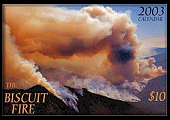




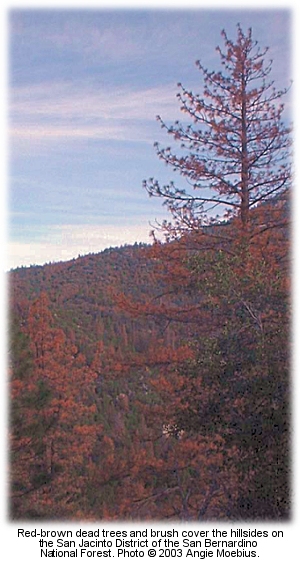 Turner got a sinking feeling. "I knew we were up against something really unusual," he says.
Turner got a sinking feeling. "I knew we were up against something really unusual," he says.
 Forest Service Employees for Environmental Ethics (
Forest Service Employees for Environmental Ethics ( "When the U.S. Forest Service informed us of the extent to which cyanide is present in this product, we took immediate action to stop any further use of this product," said Jim Wright, CDF's Assistant Deputy Director for Fire Protection.
"When the U.S. Forest Service informed us of the extent to which cyanide is present in this product, we took immediate action to stop any further use of this product," said Jim Wright, CDF's Assistant Deputy Director for Fire Protection. 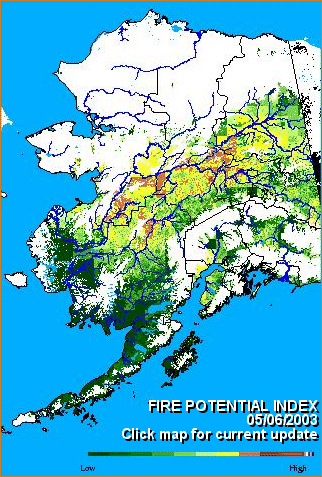

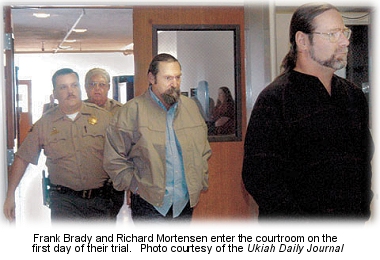 Frank Brady, of Redwood Valley, was sentenced to 12 years and 20 months for manufacturing methamphetamine, conspiracy to manufacture meth, and for arson with great bodily injury. An AP report on the
Frank Brady, of Redwood Valley, was sentenced to 12 years and 20 months for manufacturing methamphetamine, conspiracy to manufacture meth, and for arson with great bodily injury. An AP report on the 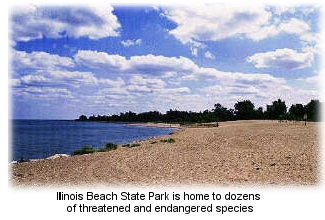 "This is about the best thing that can happen as far as the environment is concerned with burning and the regrowth that's been going on for thousands of years," said Wronski.
"This is about the best thing that can happen as far as the environment is concerned with burning and the regrowth that's been going on for thousands of years," said Wronski.
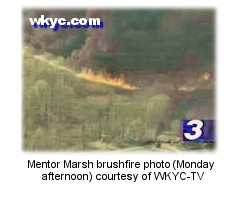 The fire, burning through salt marsh along Lake Erie, is putting up a huge plume of smoke visible from miles away (and on WKYC's
The fire, burning through salt marsh along Lake Erie, is putting up a huge plume of smoke visible from miles away (and on WKYC's 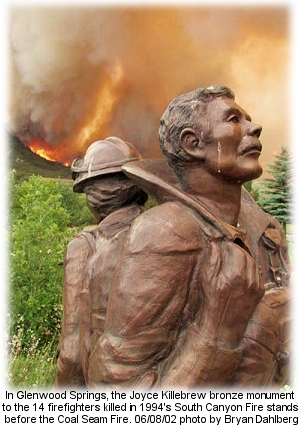 "It will come down to the weather, too," Hamilton said. "But I'm worried we might be overwhelmed with people who just show up Saturday morning and we won't have enough equipment or food."
"It will come down to the weather, too," Hamilton said. "But I'm worried we might be overwhelmed with people who just show up Saturday morning and we won't have enough equipment or food."